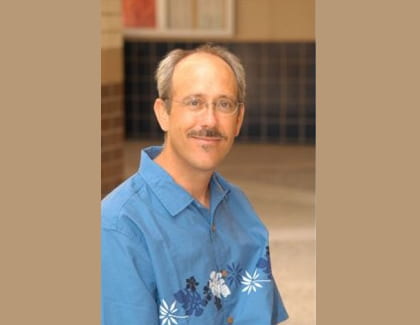Two-way streets
From Belfast to Johannesburg, Sarajevo to Jerusalem, Scott Bollens studies the links between planning and peace
“The seemingly innocuous practice of city planning can be a weapon of war or an olive branch of peace,” says Scott Bollens, professor and chair of the Department of Urban and Regional Planning in the School of Social Ecology.
In the Middle East, for instance, “Whether Jews and Palestinians can get along within Jerusalem is going to make a big difference in whether a peace settlement will progress,” Bollens says. “City building can help set up preliminary understanding for a larger peace.”
The same link between city building and urban inter-group tolerance holds true for other cities, whether the locale is Belfast, Northern Ireland or Santa Ana, California.
“Take any people in a politically contested city where the communities on one side of the hills look like southern and central Orange County, with clean paved streets and security gates. On the other side, buildings are falling down, roads are dirt, the water system is rudimentary and sewers almost non-existent. All of a sudden these mundane services become powerful political statements. They become major symbols for people to see that the advantages are going to other political, ethnic or religious groups.”
Bollens has conducted a thorough examination of urban planning techniques and tactics in a number of conflict-ridden cities. Since 1994, he’s interviewed more than 120 urban professionals in Jerusalem, Belfast, Johannesburg, Nicosia and Sarajevo about the role of city building in the midst of nationalistic ethnic conflict. In April 2002, Bollens presented his findings in a paper titled “Practical Strategies of Urban Peace-Building” at a seminar in Mostar, Bosnia-Herzegovina. The seminar brought together experts on urban cooperation in politically and ethnically contested areas, including a group of eight Israelis and Palestinians who have been examining the challenges and options in planning a Jerusalem of mutual acceptability.
Wayne Sandholtz, director of UCI’s Center for Global Peace and Conflict Studies, credits Bollens with groundbreaking work.
“Scott’s marvelous insights emerge from the expertise that he can draw upon in seemingly disparate areas: urban and regional planning, ethnic conflict and peace studies,” Sandholtz says. “I’ve been particularly fascinated with how he integrates geography, demography and culture in his analysis of ethnic tension in divided cities
In Jerusalem, Bollens found that Israeli city planners actively try to facilitate Jewish construction while inhibiting Palestinian building, all for political advantage.
“They don’t want to share Jerusalem. It’s partisan planning,” Bollens says.
In Belfast, the British maintain governing control and try to practice “neutral” planning. But the result has been to maintain decades of uneven services and housing for Catholics, Bollens says. So while the Catholic population continues to increase without more available housing, the Protestants won’t give up any of what they see as their housing in their territory. The British use of neutral planning tools paradoxically maintains this imbalance.
On the other hand, in Johannesburg, where 50 years of apartheid left enormous disparities between blacks and whites, planners have helped to ease tensions by connecting urban daily problems to root political causes of strife, Bollens says.
“To begin correcting past errors, they have set the city on a course of disproportionately distributing services to poor neighborhoods. That strategy has meant more and better sewer lines, streets, highways and schools for the disadvantaged, resulting in better relations between the two groups.”
In his studies of city planning practices that either serve the ways of war or the paths of peace, Scott Bollens sees ramifications for America. Worldwide urban studies have shown him that planners in the United States have much to learn when accommodating the American melting pot.
“For years we used this model of assimilation where we assumed everyone should do the same thing and where everyone had the same needs,” he says. “That model is dysfunctional. This is a multicultural, multiethnic country. To impose the assimilation model on this type of society doesn’t work. It doesn’t do justice to the minority population, and I don’t think it does justice to the majority population.
“You need to acknowledge there are differences out there. Different groups have different life histories, views, perceptions and cultures.
“Our students are learning to recognize those differences, plan for them, protect, enhance and nurture them, and not to rely on the simpler, but increasingly obsolete, model of assimilation.”
